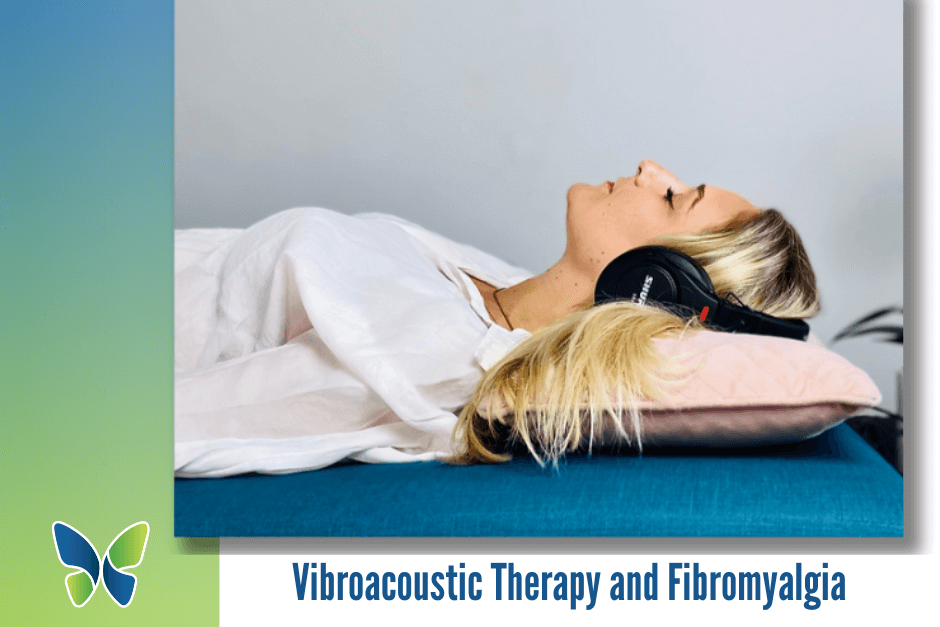Let’s dive into the soothing world of vibroacoustic therapy and explore how this scientific symphony might just be the key to unlocking relief for those battling the enigmatic foe known as fibromyalgia.
Picture this: You’re lying down on a comfortable surface, headphones snugly in place, and a gentle hum enveloping your body. This is no ordinary playlist; it’s a carefully crafted composition designed to resonate with the frequencies that can bring solace to fibromyalgia sufferers.
Now, let’s rewind a bit. What is fibromyalgia? Well, it’s like having a personal rain cloud that follows you around, raining down pain, fatigue, and a host of other symptoms. For those dealing with fibromyalgia, finding effective relief is often akin to chasing unicorns – elusive and mysterious.
Enter vibroacoustic therapy, a holistic approach that uses vibrational frequencies and sound to soothe the body and mind. Now, don’t roll your eyes just yet; there’s science behind this symphony.
Research published in 2004, Boyd-Brewer et al. highlighted the potential of vibroacoustic therapy in alleviating fibromyalgia symptoms. The vibrations used in this therapy have a knack for promoting relaxation, reducing muscle tension, and improving overall well-being.
So, how does it work?
Imagine your body as a finely tuned instrument. Fibromyalgia throws it out of harmony, like a piano with a few keys out of tune. Vibroacoustic therapy acts as the skilled hands of a piano tuner, gently coaxing those keys back into alignment. It can create changes in the brain.
Studies have shown that the vibrations from this therapy can have a positive impact on the nervous system, helping to calm the storm of signals that often exacerbate fibromyalgia symptoms. It’s like hitting the reset button for your body’s stress response. Sonic vibrations transmitted adjust the balance of the autonomic nerves, deeply relax the mind and remove excess body tension (Ailoaie et al., 2020).
Now, let’s talk about the auditory component. The sounds used in vibroacoustic therapy aren’t random; they’re carefully chosen to synchronize with the vibrations. It’s like a musical tag team working together to create a symphony of relief.
In a study published in Pain Research and Management (2015),(Naghdi et al., 2015) participants with fibromyalgia reported significant reductions in pain and fatigue after vibroacoustic therapy sessions. The frequencies used in the therapy seemed to have a direct line to the brain’s pain centers, turning down the volume on discomfort.
But what about the skeptics?
Well, science has an answer for that too. Functional magnetic resonance imaging (fMRI) studies have shown changes in brain activity during vibroacoustic therapy sessions (Zabrecky et al., 2020). It’s not just a placebo effect; there’s a real dance happening in the brain in response to these therapeutic vibrations.
Now, I know what you’re thinking – where can you sign up for this auditory wonderland? At GBRT we now offer vibroacoustic therapy sessions. It’s like a spa day for your senses, with the added bonus of potential relief from fibromyalgia woes.
In conclusion, while fibromyalgia might be a formidable opponent, vibroacoustic therapy is emerging as a potential ally in the battle for relief. The science speaks for itself, and as we continue to unravel the mysteries of fibromyalgia, therapies like this could very well be the healing notes in our wellness symphony.
So, if you’re ready to turn up the volume on your well-being, maybe it’s time to give vibroacoustic therapy a try – your body might just thank you for the musical intervention.
Click here to book an appointment today.
References:
Ailioaie C, Ailioaie L. FRI0639-HPR EFFECTS OF VIBROACOUSTIC THERAPY IN CHRONIC MUSCULOSKELETAL PAIN IN CHILDREN AND ADOLESCENTS Annals of the Rheumatic Diseases 2020;79:924.
Boyd-Brewer, C., & McCaffrey, R. (2004). Vibroacoustic sound therapy improves pain management and more. Holistic nursing practice, 18(3), 111–119. https://doi.org/10.1097/00004650-200405000-00002
Naghdi, L., Ahonen, H., Macario, P., & Bartel, L. (2015). The effect of low-frequency sound stimulation on patients with fibromyalgia: A clinical study. Pain Research and Management, 20(1), e21–e27. https://doi.org/10.1155/2015/375174
Zabrecky, G., Shahrampour, S., Whitely, C., Alizadeh, M., Conklin, C., Wintering, N., Doghramji, K., Zhan, T., Mohamed, F., Newberg, A., & Monti, D. (2020). An fMRI Study of the Effects of Vibroacoustic Stimulation on Functional Connectivity in Patients with Insomnia. Sleep Disorders, 2020, 1–9. https://doi.org/10.1155/2020/7846914






